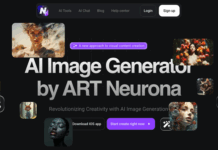It’s time for marketers to shift their focus away from market segmentation and marketing personas and focus on customer intent. The last two years have seen technology make significant changes to sales and marketing. The good news is that it has leveled the playing field for small businesses, due to the relatively cheap setup and running costs. The biggest change required is a new way of thinking about sales and marketing from the old marketing theory, previously based on data and customer actions.
When putting together a new campaign or a marketing strategy, currently it’s very common for the marketing team to ask themselves: “What does our customer look like?” They then develop a marketing persona or focus on a particular market segment they think is relevant to that campaign. In fact, this is how a lot of marketing graduates are taught to target their prospects. But now, this approach is being made redundant by Google and Facebook, as the programs get smarter at looking at the intent of the customer.
What is customer intent?
Customer intent is best defined as a prospect that has started a buying journey. Intent has two leading indicators – investment and action. In relation to “investment”, that might be time, money, or resources invested by the customer to consider all their options before buying. The customer best demonstrates they are serious about making a decision when they are invested in that decision. Their actions are the prerequisites that enable the decision to be made and the problem to be solved or the benefit to be realised.
Let me give you a simple example: If a person was looking to make their first motorbike purchase, an obvious question would be to ask if they already have a motorbike license and for what size bike (as in some states/countries it dictates the size of bike). If they state they were yet to start lessons, it becomes clear that their purchase is some time away and they ought to be treated as a low scoring marketing lead. In this case, the prerequisites to be able to benefit from the bike are not there and the conversation might be best shifted to protective equipment required for the lessons. Now, with such examples, I’ve had people argue with me that they might buy the bike early, but the reality is the “business case” doesn’t support that. Be it a personal or business decision, without a business case it’s rare that a purchase is made in the short term. In this example, it’s clear that that the prospect hasn’t made the required investment and hasn’t taken the required actions (i.e. shown customer intent) to qualify themselves as a hot prospect, but rather an early stage marketing lead.
Why focus on customer intent?
Marketing personas, or traditional methods of using demographics to create market segments, are typically based on biases or preconceptions of what the ideal customer looks like. Seldom do marketing teams have the data to formulate these personas, rather they are based on personal experience and educated guesses. Furthermore, it’s a snapshot of the entire potential client pool, not those who are taking action to make a purchasing decision. If the focus is shifted to customer intent, it quickly targets the effort on those who are actually going to make a buying decision at some point. In essence, it is those who have pre-qualified themselves.
Intent in action – Origin Energy Case Study
Google’s blog, “Think with Google”, includes a great example of the use of customer intent in the May 2017 edition. Origin Energy is an Australian Energy retailer. They were targeting people who were shifting houses and therefore would be shopping for an energy retailer. Origin was faced with two options: The first was to advertise when people searched for a gas or power supplier. However, they found this highly competitive, expensive, and very late in the buying journey. The second option was to target indicators of customer intent, in order to educate and influence them earlier in the buying journey. When Origin put their message in front of people who searched for indicators of intent, such as moving services or a looking for a realtor, the results, especially compared to previous campaigns, were excellent.
They experienced:
- 60% lift in searches for “Origin Energy”
- 50% reduction in cost per view
- 36% increase in ad recall
If you are an advertiser and looking to target customer intent for your next online advertising campaign, look at “Life Events” on Google and YouTube, and “Behaviours” on Facebook.
For your offline activities, get clear on what the prerequisites are for your solution. That is, what actions and investment the customer needs to make before they may become a customer.
Chatbots and Artificial intelligence in Customer Service
Facebook has been encouraging the use of chatbots by advertisers and we are seeing early adopters deploying AI and chatbots on their websites. Chatbots are a way to serve relevant content to visitors and make tailored offers informed by AI, which can be used to take an educated guess as to what might be of value to the visitor. For large businesses, it’s a great way to scale customer service without an increase in cost; and for small businesses it’s a great way for to serve more customers over a longer period.
I recently worked with one US client that deployed both technologies for its smaller business locations, which held limited office hours. The solution included onsite kiosks and an upgraded website. Initially, it was intended only to be an after hours offering, as it was perceived that new customers were best served by people, not technology. But the results of the trial quickly changed this approach.
The business saw an increase in sales by 16% in the first quarter of the trial, so the technology was allowed to run 24 hours and results again continued to improve by a further 6%. The further increase of 6% was the real surprise. Talking to new clients, the anecdotal evidence suggested that people are very happy to transact and be served by the technology. Furthermore, they felt more in control of the transaction and were reluctant to pick up the phone as it meant that they had to deal with a “pushy salesperson”.
The first jump in sales results could be put down to the effective extension of the “selling hours” to around the clock. Prospective customers were able to help themselves at a time that suited them. Plus, 34% of customers who had their chatbot conversations handed off to customer service staff, who dealt with it the next day, converted to clients.
Two other surprising side effects of the chatbot were the reduction in Google advertising costs and the reduced number of inbound calls. Customers were not clicking as often on the paid Google ad just to get a phone number. And, rather than calling for basic enquiries such as opening hours, what day of the month the bill was due, and stock availability, customers were getting those simple answers from the chatbot.
For those ready to change the way they do sales and marketing, and potentially experience valuable increases in customer conversion, AI and chatbots can be purchased and trialled cheaply. A number of first time users are learning to set up basic functionality themselves or investing about $5,000 for the set up. The ongoing monthly fee is typically a few hundred dollars. As most services are cloud applications or software as a service (SAAS) they can be trialled for the monthly fee.
It’s true that some might perceive AI and chatbots as nothing more than a poor substitute for personal customer service and just a way for companies to cut down on labor costs. But the sales results are showing that some prospective clients simply prefer to do their own research and the initial purchase online, where they are in control of the transaction and don’t feel that they might be pressured by a salesperson. By having this availability, and moving ahead with the preferences of today’s consumer, companies can gain more customers and served more people than they might otherwise.
Find a Home-Based Business to Start-Up >>> Hundreds of Business Listings.
















































